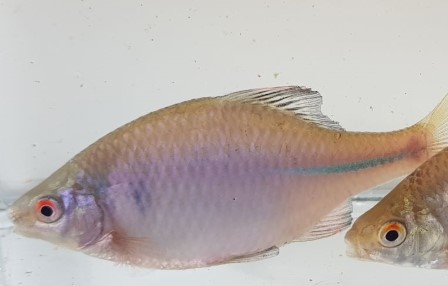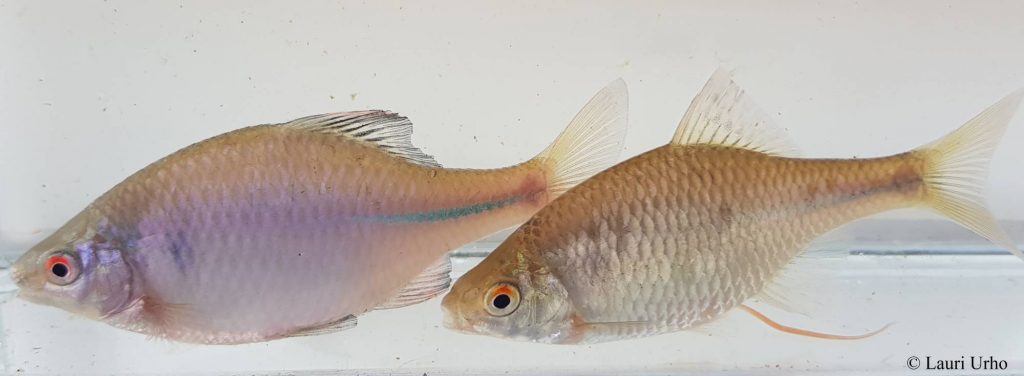Research revealed two new alien fish species in Finland

Alien species are an increasing risk to threatened species. Unlike as is generally believed, importing a new species and releasing it into nature is also a risk to biodiversity.
Two fish species, not previously encountered in Finland, were found in Southwest Finland. The species were discovered when mapping and studying pumpkinseed populations. A status report on pumpkinseed (Lepomis gipposus), regarded as an invasive alien species, and a proposal for a management plan will be published next week. During the mapping process, alien species were discovered from more than 50 ponds in Southwest Finland.
The new species, common nase (Chondrostoma nasus, photo 1) and European bitterling (Rhodeus amarus, photo 2), are far from home. Rivers in Central Europe are natural habitats for schools of common nase, well-known for migration. European bitterling has spread north and west over time from its original habitats in the northern parts of the Black Sea. It was also sighted in Estonia in 2019. Currently, the closest water area shared by the species is located in Poland. It is probable that someone has imported the species into Finland and released them into the pond in Southwest Finland.


It is not yet known what impact alien fish species can have on other species living in the pond. At the current fish density, the species, which mainly use plant-based nutrition, are not believed to damage native species; however, no studies have yet been conducted.
“Common nase is known to carry the common liver fluke, which also transfers to people, and it may spread to other water bodies via intermediate hosts, such as birds. European bitterling in turn can carry a disease transmitted to salmonids. Importing and releasing alien fish species without proper supervision is like playing Russian roulette with Finnish nature”, says Lauri Urho, senior scientist at the Natural Resources Institute Finland (Luke), who discovered the two species.
It is known that several alien species have been imported and released into nature without proper authorisation for roughly a decade in Southwest Finland. Importing fish into Finland is subject to a licence. Similarly, a licence is needed to release them into natural water bodies.
“No licence should even be granted for stocking alien species if the species potentially harms existing nature. It is not known that any such licences have been granted. People either are not familiar with regulations or do not care. Fish species have been released unlawfully without even notifying the owners of these water areas”, Urho says.
Of the ten new fish species discovered in Finland during the past 30 years, nine have been alien species that have entered Finland as a result of human activities. The scientist finds it worrying that alien species continue to be imported and released, regardless of prohibitions.
“This may also be based on ignorance. We hope that by sharing information about risks and threats associated with alien species we can put a stop to unauthorised importing and releasing.”
More information about the species (in Finnish): https://kalahavainnot.luke.fi/kalalajitieto/fi/kalalajit
For further information, please contact: Lauri Urho, senior scientist, Luke, tel. +358 29 532 7258, lauri.urho(at)luke.fi